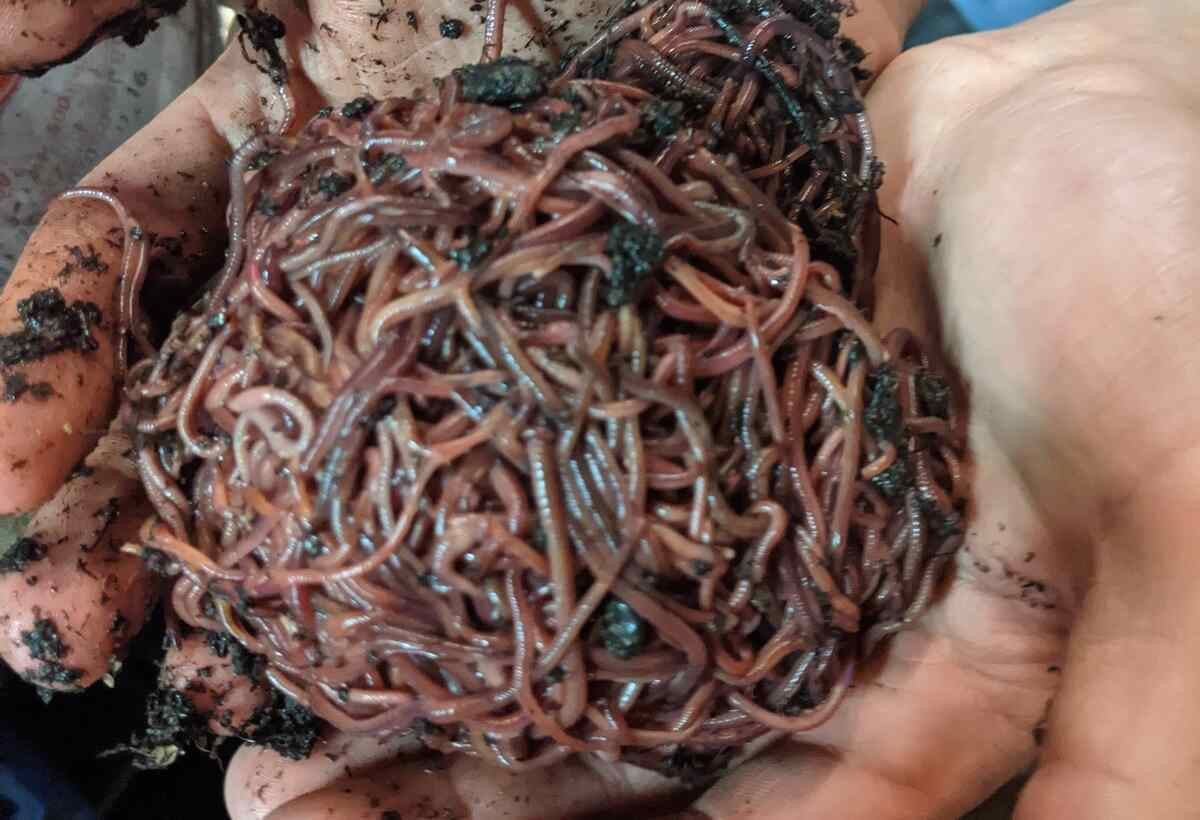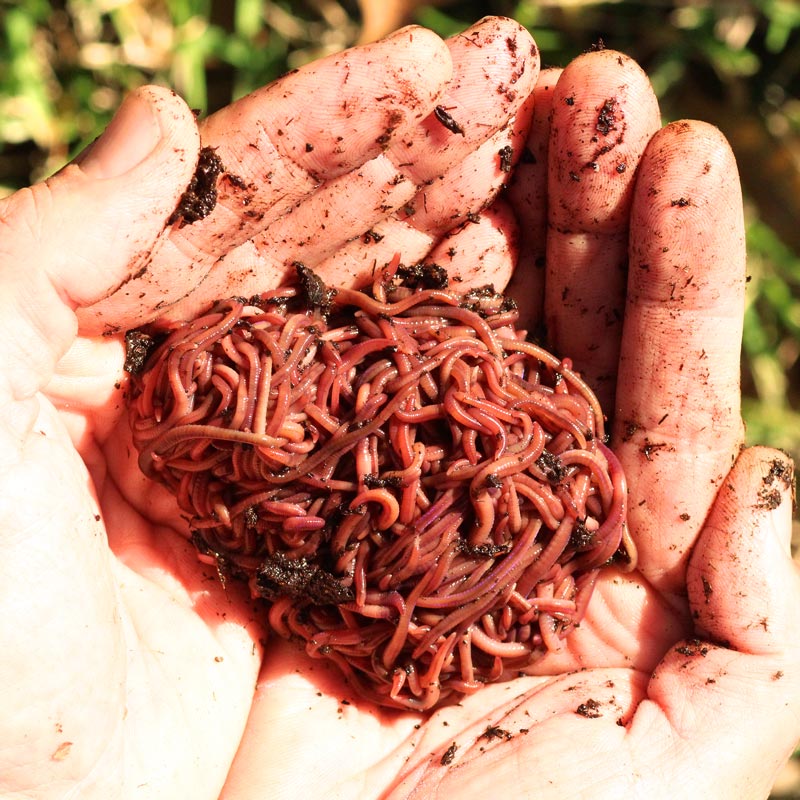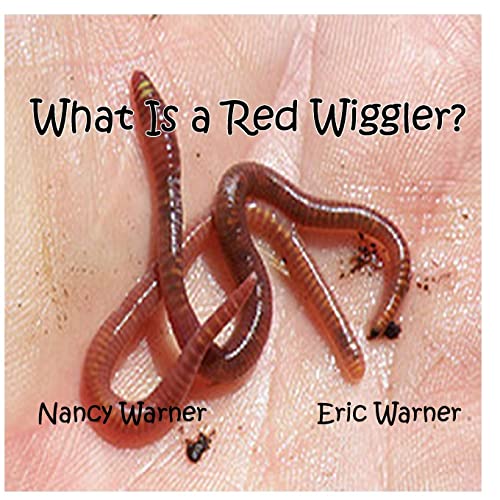Red Wigglers: The Unsung Heroes of Organic Waste Recycling
Red wigglers, or Eisenia fetida, act as crucial representatives in the organic waste reusing process, changing disposed of materials into valuable vermicompost. Their efficient break down of raw material not just improves dirt top quality however additionally adds to sustainable waste management methods. As the world significantly seeks options to battle waste buildup and boost farming performance, comprehending the role of these worms becomes crucial. What devices allow them to grow in compost atmospheres, and exactly how can they be properly made use of in both domestic and industrial setups? Discovering these questions exposes the broader ramifications of vermicomposting in our eco-friendly landscape.
What Are Red Wigglers?
The exceptional resilience of red wigglers, scientifically referred to as Eisenia fetida, emphasizes their critical duty in organic waste recycling. These tiny, reddish-brown earthworms are commonly discovered in breaking down natural matter, such as compost heap and manure lots. Lake Hickory Bait. Unlike other earthworm varieties, red wigglers flourish in nutrient-rich settings and are extremely reliable at breaking down organic materials, making them essential for vermicomposting

(Red Wiggler Express)Along with their duty in waste reduction, red wigglers add to dirt health by boosting dirt framework and oygenation via their delving tasks (Lake Hickory Bait). Their presence in composting systems not only improves disintegration prices but likewise advertises a sustainable approach to lose management, illustrating their importance in environmental conservation initiatives
Benefits of Composting With Worms
Composting with worms, especially red wigglers, provides various benefits that boost both waste monitoring and soil wellness. First, these worms effectively break down organic waste, transforming it into nutrient-rich vermicompost that improves soil. This procedure increases decay, enabling a faster recycling of kitchen area scraps and various other organic products compared to conventional composting approaches.
In addition, the vermicompost generated by red wigglers is teeming with advantageous bacteria, which aid improve soil structure, oygenation, and dampness retention. This improves the total wellness of plants, advertising energetic development and raised yields in gardens and farming setups. Additionally, the use of worms in composting decreases the manufacturing of greenhouse gases, such as methane, contributing to an extra sustainable waste monitoring system.

How to Beginning Vermicomposting
Developing a vermicomposting system is an uncomplicated procedure that can generate substantial benefits for both waste monitoring and dirt enrichment. To begin, select an appropriate container, such as a plastic container or wooden box, with ample ventilation openings to make certain proper airflow. The dimensions need to ideally be around 2 feet by 3 feet, allowing sufficient area for the worms to thrive.
Following, prepare bedding product, which can be composed of shredded paper, cardboard, or coconut coir. This bedding ought to be moistened to develop an ideal environment for the worms. As soon as the bed linens is in area, present red wigglers (Eisenia fetida) into the container, typically around one pound of worms for every single square foot of area.
Complying with the placement of worms, include organic waste, such as vegetables and fruit scraps, coffee premises, and crushed eggshells. Stay clear of including milk, meat, or oils, as these can produce smells and attract insects. Place the container in a shaded, temperature-controlled area to maintain optimum problems for worm task. With these actions, you will successfully start a vermicomposting system that adds to lasting waste management and improves your soil.
Keeping a Healthy And Balanced Worm Container
(Red Wiggler Express)Maintaining a worm container prospering requires regular focus and like guarantee the health and wellness of the red wigglers and the efficiency of the composting process. Proper upkeep starts with keeping track of the wetness degrees; the bin ought to perspire but not waterlogged. An excellent guideline is to preserve an uniformity comparable to a wrung-out basics sponge.
Carefully blending the bedding and food scraps every few weeks stops compaction and makes sure that all worms have access to oxygen. In addition, it is crucial to feed the worms properly.
Temperature level law is an additional crucial element. Red wigglers grow in a variety of 55 to 77 levels Fahrenheit. If the bin ends up being also hot or chilly, the worms may come to be stressed out - Lake Hickory Bait. Periodically inspect for signs of health and wellness, such as worm population growth and the presence of healthy castings. By vigilantly taking care of these variables, one can preserve a robust and productive worm bin.
Effect on Sustainable Living
The effective maintenance of a worm container not only benefits the wellness of red wigglers however also adds dramatically to sustainable living techniques. By reusing natural waste, such as kitchen scraps and lawn debris, red wigglers assist draw away considerable amounts of product from land fills. This reduction in waste not only lowers greenhouse gas discharges yet additionally decreases the environmental burden connected with waste management.
Moreover, the castings generated by red wigglers work as a nutrient-rich natural fertilizer, enhancing dirt wellness and advertising plant growth. This all-natural alternative to chemical plant foods sustains sustainable farming and gardening techniques, decreasing dependence on synthetic inputs that can damage communities. Additionally, worm composting cultivates recognition of waste monitoring, encouraging people and areas to adopt more lasting practices.

Verdict
In summary, red wigglers function as important contributors to natural waste reusing via their efficient decay of natural products. Their capacity to produce nutrient-rich vermicompost enhances dirt wellness and supports lasting farming methods. By incorporating vermicomposting into waste monitoring approaches, individuals and communities can considerably decrease waste while advertising environmental sustainability. The function of Eisenia fetida in fostering healthy and balanced ecological communities highlights the importance of these microorganisms in achieving sustainable living and enhancing soil fertility.